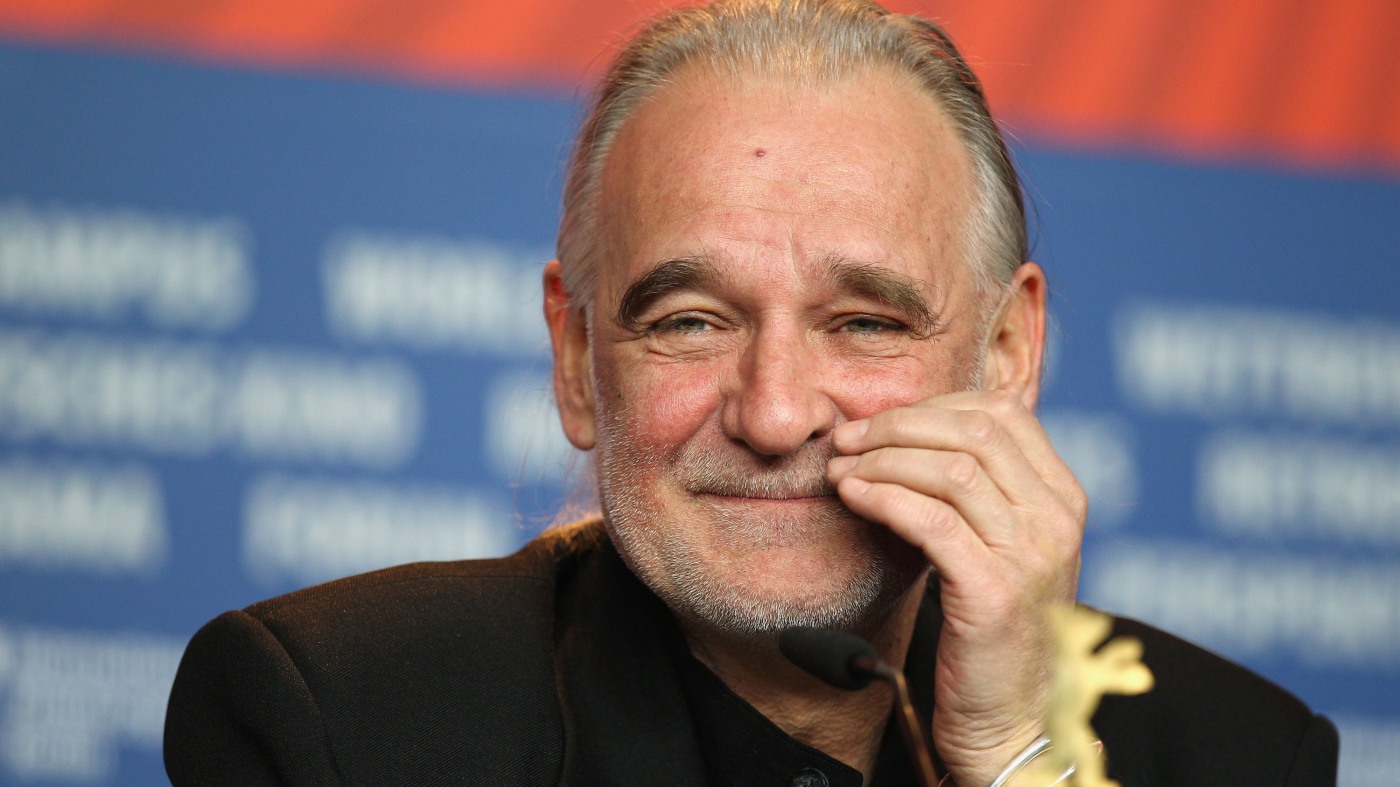Lifestyle
Liv Morgan Says She's A Tag Team Title Away From Best Year In WWE History

TMZSports.com
Liv Morgan already considers herself the greatest Women’s Champion of all-time … but the WWE Superstar tells TMZ Sports if she’s able to add another Tag Team title to her resume, her monumental 2024 will go down as the best year in the organization’s history!!
We caught up with Liv fresh off her win over Nia Jax to become the first-ever Women’s Crown Jewel Champion … and asked her all about her run-in with Bianca Belair and Jade Cargill on ‘Raw’ just two days later — when they challenged her and Raquel Rodriguez to a Tag Team title match.
While Bianca and Jade ran to social media to chirp some more after their encounter … Liv says all that matters is coming out on top when they wrestle next week.
If Liv and Raquel were to do just that, it would mark the third title win for the duo and the cherry on top for the 30-year-old’s unbelievable year … which also included taking the Women’s Championship from Becky Lynch, beating Rhea Ripley at SummerSlam and being the most viral wrestler on the internet in the process.
So when we asked if Liv is a tag team title from the best year in WWE history, her answer was unwavering.
“For sure, for sure, 100% and that’s exactly what I’m going to do,” Liv said.
“If you think I’m annoying now, if you think you hate hearing me laugh and the sound of my voice now, then wooo,” Liv continued. “Let me tell you, I’m never, ever, ever gonna shut up.”
As Liv’s success continues to grow, so does her list of enemies … but she isn’t stressing it one bit.
“Everyone wants a piece of Liv Morgan,” she said. “Lucky enough, there’s enough of me to go around. And lucky enough for me, I have the most dominant group in WWE watching my back, the Judgement Day, and I also have Raquel Rodriguez.”
“So yeah, you know, it’s a lot. I’m in high demand. But my back is covered, so I’m feeling really great.”
Now that Liv declared her revenge tour over in exchange for her world tour, she gave us an inside look at what’s to come.
“You can expect to watch me every single week on your television, traveling the world doing whatever I want,” she said. “Stopping anyone that comes in my way and just being a menace. Causing havoc on your favorite TV show, ‘Monday Night Raw.’”

Lifestyle
Timothée Chalamet brings a lot to the table in ‘Marty Supreme’

Timothée Chalamet plays a shoe salesman who dreams of becoming the greatest table tennis player in the world in Marty Supreme.
A24
hide caption
toggle caption
A24
Last year, while accepting a Screen Actors Guild award for A Complete Unknown, Timothée Chalamet told the audience, “I want to be one of the greats; I’m inspired by the greats.” Many criticized him for his immodesty, but I found it refreshing: After all, Chalamet has never made a secret of his ambition in his interviews or his choice of material.
In his best performances, you can see both the character and the actor pushing themselves to greatness, the way Chalamet did playing Bob Dylan in A Complete Unknown, which earned him the second of two Oscar nominations. He’s widely expected to receive a third for his performance in Josh Safdie’s thrilling new movie, Marty Supreme, in which Chalamet pushes himself even harder still.
Chalamet plays Marty Mauser, a 23-year-old shoe salesman in 1952 New York who dreams of being recognized as the greatest table-tennis player in the world. He’s a brilliant player, but for a poor Lower East Side Jewish kid like Marty, playing brilliantly isn’t enough: Simply getting to championship tournaments in London and Tokyo will require money he doesn’t have.

And so Marty, a scrappy, speedy dynamo with a silver tongue and inhuman levels of chutzpah, sets out to borrow, steal, cheat, sweet-talk and hustle his way to the top. He spends almost the entire movie on the run, shaking down friends and shaking off family members, hatching new scams and fleeing the folks he’s already scammed, and generally trying to extricate himself from disasters of his own making.
Marty is very loosely based on the real-life table-tennis pro Marty Reisman. But as a character, he’s cut from the same cloth as the unstoppable antiheroes of Uncut Gems and Good Time, both of which Josh Safdie directed with his brother Benny. Although Josh directed Marty Supreme solo, the ferocious energy of his filmmaking is in line with those earlier New York nail-biters, only this time with a period setting. Most of the story unfolds against a seedy, teeming postwar Manhattan, superbly rendered by the veteran production designer Jack Fisk as a world of shadowy game rooms and rundown apartments.
Early on, though, Marty does make his way to London, where he finagles a room at the same hotel as Kay Stone, a movie star past her 1930s prime. She’s played by Gwyneth Paltrow, in a luminous and long-overdue return to the big screen. Marty is soon having a hot fling with Kay, even as he tries to swindle her ruthless businessman husband, Milton Rockwell, played by the Canadian entrepreneur and Shark Tank regular Kevin O’Leary.
Marty Supreme is full of such ingenious, faintly meta bits of stunt casting. The rascally independent filmmaker Abel Ferrara turns up as a dog-loving mobster. The real-life table-tennis star Koto Kawaguchi plays a Japanese champ who beats Marty in London and leaves him spoiling for a rematch. And Géza Röhrig, from the Holocaust drama Son of Saul, pops up as Marty’s friend Bela Kletzki, a table tennis champ who survived Auschwitz. Bela tells his story in one of the film’s best and strangest scenes, a death-camp flashback that proves crucial to the movie’s meaning.
In one early scene, Marty brags to some journalists that he’s “Hitler’s worst nightmare.” It’s not a stretch to read Marty Supreme as a kind of geopolitical parable, culminating in an epic table-tennis match, pitting a Jewish player against a Japanese one, both sides seeking a hard-won triumph after the horrors of World War II.

The personal victory that Marty seeks would also be a symbolic one, striking a blow for Jewish survival and assimilation — and regeneration: I haven’t yet mentioned a crucial subplot involving Marty’s close friend Rachel, terrifically played by Odessa A’zion, who’s carrying his child and gets sucked into his web of lies.
Josh Safdie, who co-wrote and co-edited the film with Ronald Bronstein, doesn’t belabor his ideas. He’s so busy entertaining you, as Marty ping-pongs from one catastrophe to the next, that you’d be forgiven for missing what’s percolating beneath the movie’s hyperkinetic surface.
Marty himself, the most incorrigible movie protagonist in many a moon, has already stirred much debate; many find his company insufferable and his actions indefensible. But the movies can be a wonderfully amoral medium, and I found myself liking Marty Mauser — and not just liking him, but actually rooting for him to succeed. It takes more than a good actor to pull that off. It takes one of the greats.

Lifestyle
The Best of BoF 2025: A Year of Global Upheaval

Lifestyle
Hungarian filmmaker Béla Tarr — known for bleak, existential movies — has died

Hungarian director Béla Tarr at the Berlin International Film Festival in 2011.
Andreas Rentz/Getty Images
hide caption
toggle caption
Andreas Rentz/Getty Images
Béla Tarr, the Hungarian arthouse director best known for his bleak, existential and challenging films, including Sátántangó and Werckmeister Harmonies, has died at the age of 70. The Hungarian Filmmakers’ Association shared a statement on Tuesday announcing Tarr’s passing after a serious illness, but did not specify further details.
Tarr was born in communist-era Hungary in 1955 and made his filmmaking debut in 1979 with Family Nest, the first of nine feature films that would culminate in his 2011 film The Turin Horse. Damnation, released in 1988 at the Berlin International Film Festival, was his first film to draw global acclaim, and launched Tarr from a little-known director of social dramas to a fixture on the international film festival circuit.
Tarr’s reputation for films tinged with misery and hard-heartedness, distinguished by black-and-white cinematography and unusually long sequences, only grew throughout the 1990s and 2000s, particularly after his 1994 film Sátántangó. The epic drama, following a Hungarian village facing the fallout of communism, is best known for its length, clocking in at seven-and-a-half hours.
Based on the novel by Hungarian writer László Krasznahorkai, who won the Nobel Prize in Literature last year and frequently collaborated with Tarr, the film became a touchstone for the “slow cinema” movement, with Tarr joining the ranks of directors such as Andrei Tarkovsky, Chantal Akerman and Theo Angelopoulos. Writer and critic Susan Sontag hailed Sátántangó as “devastating, enthralling for every minute of its seven hours.”
Tarr’s next breakthrough came in 2000 with his film Werckmeister Harmonies, the first of three movies co-directed by his partner, the editor Ágnes Hranitzky. Another loose adaptation of a Krasznahorkai novel, the film depicts the strange arrival of a circus in a small town in Hungary. With only 39 shots making up the film’s two-and-a-half-hour runtime, Tarr’s penchant for long takes was on full display.
Like Sátántangó, it was a major success with both critics and the arthouse crowd. Both films popularized Tarr’s style and drew the admiration of independent directors such as Jim Jarmusch and Gus Van Sant, the latter of which cited Tarr as a direct influence on his films: “They get so much closer to the real rhythms of life that it is like seeing the birth of a new cinema. He is one of the few genuinely visionary filmmakers.”
The actress Tilda Swinton is another admirer of Tarr’s, and starred in the filmmaker’s 2007 film The Man from London. At the premiere, Tarr announced that his next film would be his last. That 2011 film, The Turin Horse, was typically bleak but with an apocalyptic twist, following a man and his daughter as they face the end of the world. The film won the Grand Jury Prize at the Berlin International Film Festival.
After the release of The Turin Horse, Tarr opened an international film program in 2013 called film.factory as part of the Sarajevo Film Academy. He led and taught in the school for four years, inviting various filmmakers and actors to teach workshops and mentor students, including Swinton, Van Sant, Jarmusch, Juliette Binoche and Gael García Bernal.
In the last years of his life, he worked on a number of artistic projects, including an exhibition at a film museum in Amsterdam. He remained politically outspoken throughout his life, condemning the rise of nationalism and criticizing the government of Hungarian leader Viktor Orbán.
-

 News1 week ago
News1 week agoFor those who help the poor, 2025 goes down as a year of chaos
-

 Science1 week ago
Science1 week agoWe Asked for Environmental Fixes in Your State. You Sent In Thousands.
-

 Detroit, MI4 days ago
Detroit, MI4 days ago2 hospitalized after shooting on Lodge Freeway in Detroit
-
Georgia1 week ago
Best in Georgia: 2025 AJC Varsity high school football all-state teams
-

 Dallas, TX3 days ago
Dallas, TX3 days agoDefensive coordinator candidates who could improve Cowboys’ brutal secondary in 2026
-

 Detroit, MI1 week ago
Detroit, MI1 week agoWith 46k outages around Michigan, Metro Detroit prepares for power loss
-

 Southeast1 week ago
Southeast1 week agoMurder in small-town America: The crimes that tore quiet communities apart in 2025
-

 Movie Reviews1 week ago
Movie Reviews1 week ago‘Marty Supreme’ is Supreme Cinema – San Diego Jewish World





















